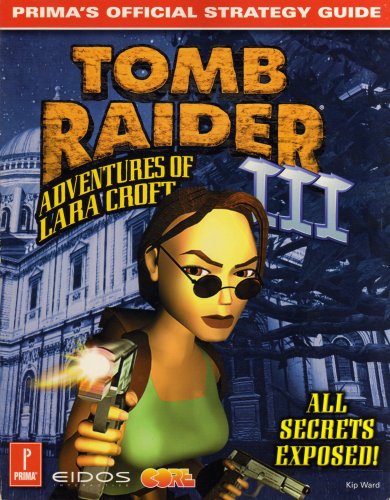About This File
Of the classic, PS1-era Tomb Raider titles, Tomb Raider III is probably the most difficult, and not always for the right reasons. With Core Design's employees struggling with epic burnout after being forced to churn out two sequels in two years, this game had the largest design team yet behind it, but by now the cracks were starting to show. With the public clambering for more everything, and no time to build a new in-game engine, they still managed to pack in new moves, including crawling, hand-over-hand climbing, and sprinting. Lara's arsenal was upgraded. There were new outfits to wear and new environments to explore, new enemies to slay, and new traps to contend with. The devs put a major focus on the idea of multiple ways to reach the same goal this time around, something they briefly toyed with in a couple of places in the first two games; this time, it was practically law. Instead of linear level progression, once players beat the opening stages set in India, they could choose to visit London, Nevada, or an island in the South Pacific, before taking Lara to Antarctica for her final confrontation.
The other Tomb Raider games could easily be completed without a guide; you'd occasionally want to refer to one if you couldn't locate that last secret, or were having difficulty understanding one of the puzzles, but by and large, it was within most players' abilities to complete the game without one. Tomb Raider and Tomb Raider II fostered level design that wanted to surprise and delight the player. Tomb Raider III, on the other hand, was designed in such a way as to be openly hostile, with massive, sprawling levels filled with death traps and obtuse puzzles, along with enemies placed specifically to force the player to waste resources. Picking the wrong location after finishing India, in fact, is tantamount to the game kicking you in the nuts/ovaries, and the "wrong" choice is not telegraphed in any way. If you ever flip through a strategy guide for Tomb Raider III that does not instruct you to go to Nevada upon finishing India, throw that book away.
Fortunately, this Prima guide does not make that mistake, and the path Kip Ward lays out is the "easiest" way through the game. That doesn't mean you get a cake walk, it just means you won't flip the difficulty switch to "screw you" without realizing it. Kudos also to Ward for providing a walkthrough of sorts for Lara's Home, explaining how to get into the secret treasure room, find the Racetrack key, and unlock the Quad Bike course. None of this is essential to beating the main quest, but it's possible to explore her mansion without realizing there's more to it than just beating the Assault Course and learning how to jump around.
Enjoy! 








.thumb.jpg.ad54c1d1db5da5ca7558499fd95e1059.jpg)
page001.thumb.jpg.00d03856f3b9354c13ce6ce178aff7cc.jpg)



page001.thumb.jpg.050d53043ecc17e160b4978632945c60.jpg)
page000a.thumb.jpg.2adaadd9962a81bf1cd8d7ff6701cf45.jpg)
Recommended Comments
Join the conversation
You can post now and register later. If you have an account, sign in now to post with your account.
Note: Your post will require moderator approval before it will be visible.